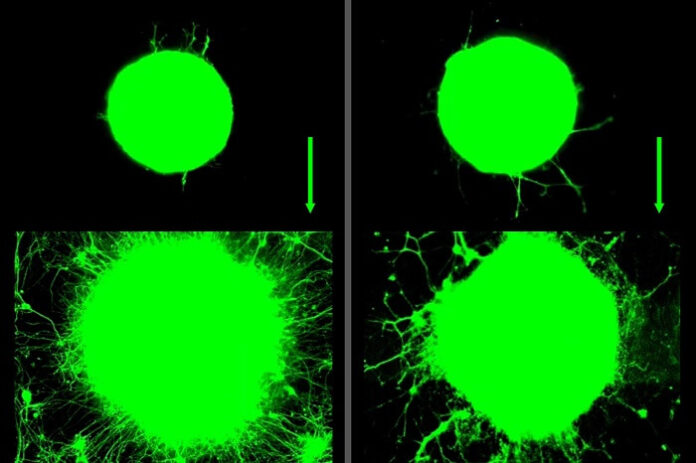

MIT engineers have uncovered a groundbreaking link between exercise and nerve growth, discovering that physical activity can positively affect neurons at a cellular level. Their research indicates that when muscles contract during exercise, they release a biochemical mixture known as myokines. These myokines stimulate neurons to grow significantly, suggesting that exercise not only benefits muscles and overall health but also supports nerve development.
As reported by medicalxpress, the study demonstrated that when neurons were exposed to muscle-generated myokines, they exhibited growth four times greater than neurons that had not been exposed. This substantial increase points to a notable biochemical effect on nerve growth driven by exercise.
The team, led by Dr. Ritu Raman, the Eugene Bell Career Development Assistant Professor of Mechanical Engineering at MIT, also discovered that neurons react not only to biochemical signals but also to the physical effects of exercise. By simulating muscle contractions, they found that the mechanical stretching and movement associated with exercise could promote neuronal growth to a similar extent as exposure to myokines.
“Neurons are physically attached to muscles, so they move and stretch in sync with muscle activity,” Dr. Raman explained. “We wanted to test whether purely mechanical forces, in the absence of biochemical signals, could stimulate growth. To our surprise, mechanical exercise alone proved just as effective.”
To investigate these effects, the researchers developed innovative techniques to mimic both the biochemical and physical impacts of exercise. They created small sheets of muscle tissue that could contract in response to light and collected the myokine-rich solution produced during this process. This solution was applied to motor neurons derived from mouse stem cells, leading to rapid and significant neuronal growth. Additionally, the team grew motor neurons embedded with tiny magnets, allowing them to simulate exercise by moving the neurons back and forth using an external magnetic field.
The study’s findings suggest that both the biochemical and mechanical components of exercise play crucial roles in stimulating nerve growth and maturation. This research could pave the way for new therapies to repair nerve damage and improve mobility in individuals with conditions such as neurodegenerative diseases or traumatic injuries.
“Now that we understand this muscle-nerve interaction, we can explore targeted muscle stimulation as a potential treatment for nerve injury,” Dr. Raman said. “This approach might help restore mobility for those who have lost it due to trauma or neurodegenerative diseases like ALS.”
The MIT team’s research builds on prior work where they successfully restored mobility in mice with muscle injuries by implanting engineered muscle tissue and stimulating it with light. This new study emphasizes the dual impact of exercise—both biochemical and mechanical—in promoting nerve growth and highlights exercise’s potential role as a form of medicine. The team now plans to test their findings in clinical settings to explore practical applications for patient care.
“This is just our first step toward understanding and harnessing exercise as medicine,” Dr. Raman said, underscoring the transformative potential of their findings.























